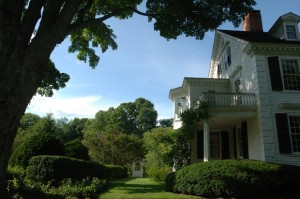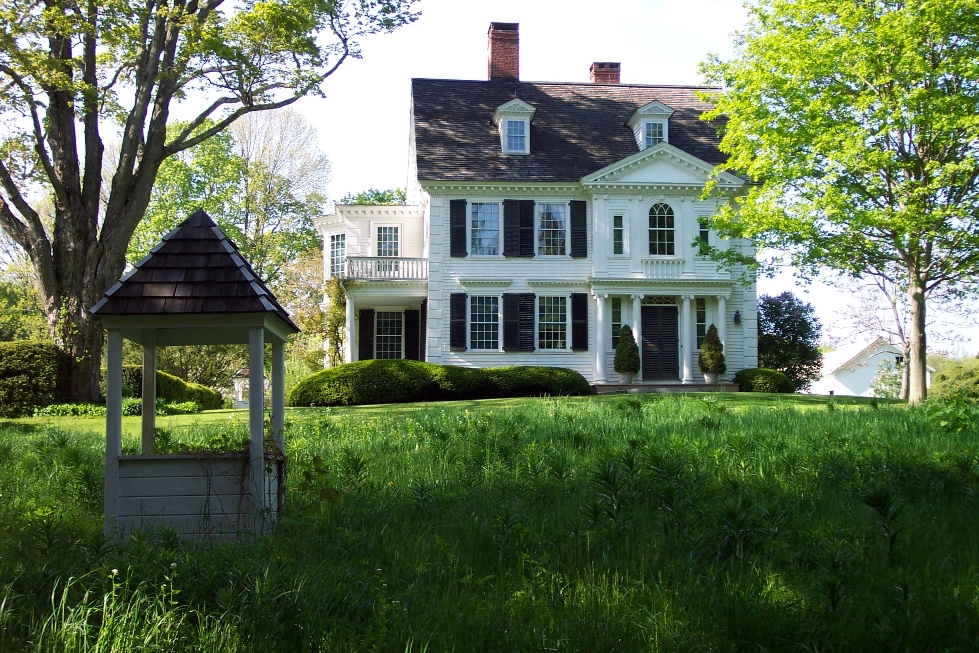The Bellamy-Ferriday House is a three-story, white clapboard house located in the center of Bethlehem, Connecticut. Under the protection of Connecticut Landmarks, the 13 rooms that make up the house feature American and European antiques that represent centuries of evolution in domestic culture. The property’s exceptional landscaping includes a formal parterre garden of shrubs and flowers that helps make the Bellamy-Ferriday House one of the most popular attractions in western Connecticut.
The house first belonged to Reverend Joseph Bellamy, a leader of the Great Awakening in the 1740s. After graduating from Yale University at age 16 and traveling throughout the state, Bellamy settled in Bethlehem where he became a famous preacher, author, and teacher.
In 1744, Bellamy purchased land for his residence in what was then Woodbury. He built his home in two stages, starting around 1754 and making significant additions in 1767. Throughout the course of Bellamy’s life, this house served numerous functions, providing him a place to live, to write such famous works as True Religion Delineated, and to open the first theological school in North America.
After Bellamy’s death in 1790, the house passed to Bellamy’s son David and stayed in the family until 1868. In 1880, under the ownership of the Hull family from New York, the house received a number of updates, including the addition of bay windows and a veranda, giving the building a more modern, Victorian appearance.
Ferriday Purchases the House

Bellamy-Ferriday House & Garden, Bethlehem – CT Trust for Historic Preservation
Henry Ferriday purchased the property as a summer home for his wife and daughter in 1912 and added a number of modern amenities, such as indoor plumbing. After Ferriday’s death in 1914, his daughter, Caroline, along with her mother, continued to spend their summers in Bethlehem. They also began making changes to the property surrounding the house, adding manicured lawns and gardens and planting evergreens to provide the home with more privacy.
After her mother’s death in 1953, Caroline Ferriday (who lived in France during World War II and earned the Medal of France and the Cross of the Knight of the Legion of Honor for her work supporting the French resistance) began restoring some of the building’s original features. She removed Greek revival and Victorian mantels, as well as the south porch of the home, to try to restore some of its 18th-century character. Upon her death in 1990, she left the home to the Antiquarian and Landmark Society (later renamed Connecticut Landmarks).
Today the home is still under the protection of Connecticut Landmarks. Its immaculate landscaping provides a glimpse into the life the Ferriday family enjoyed, surrounded by fragrant trees, shrubs, roses, lilacs, and peonies. In addition, the interior of the house contains works of art, ornaments, and furniture that reflect much of Caroline Ferriday’s taste and interest in honoring the home’s history. Open to the public, the Bellamy-Ferriday house still hosts numerous events, including a dog show to honor Caroline Ferriday’s love for canine companions.









